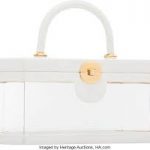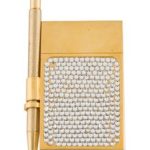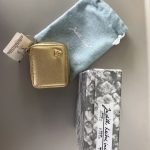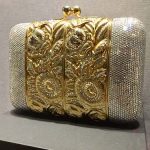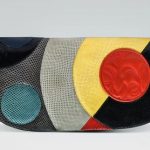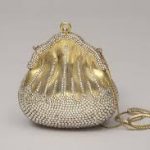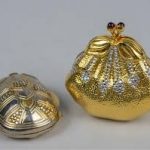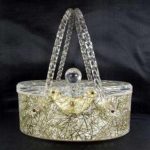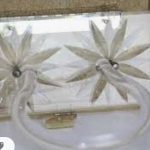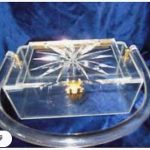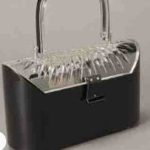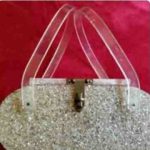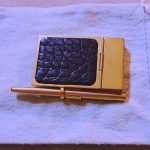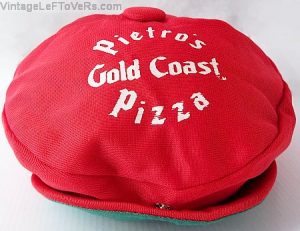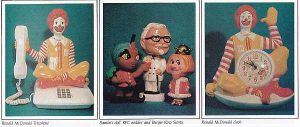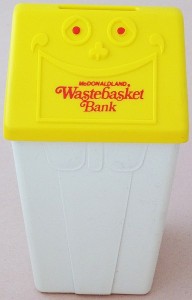LUCITE TO LEIBER: ICONIC HANDBAGS IN MID-20th-CENTURY NYC
 (0)
(0)
- Bag presented to Hillary Clinton at her husband’s second inaugural, 1997 Installation views of “Judith Leiber: Crafting a New York Story” MAD Museum New York, New York April 4 – August 6, 2017
- Judith Leiber Pad w Pen Miniature created by the NYC Fashion Designer
- Artist Judith Leiber Rare Pad w Pen Minaudière
LUCITE TO LEIBER: ICONIC HANDBAGS IN MID-20th-CENTURY NYC looks at New York City as a fashion center for women’s hand bags during the 20th Century. During the first half of the 20th Century, NYC attracted more than its share of mid-century modern style. for several decades plastic in the form of Lucite rose to great popularity to drive handbag fashions —until it fell out of favor. the second half of the 20th Century was marked by one woman’s creative expression which left its permanent mark on fashion. Both of these fashion trends are now thriving in the world of collectibles.
Today, plastic is considered an inexpensive material which many of us prefer not to have. Thermoplastics, however, was the biggest trend to come out of post-war America. There was nothing more glamorous and no better an example of what was special about 20th Century style than employing modern plastics and geometric forms in design, industry, and fashion. American chemical company DuPont, created Lucite in 1931 as a successful replacement for plastics such as Bakelite and Catalin. It was used during World War II, then later the material was adapted during the post war 1940’s and 1950’s for designing jewelry, shoes, cigarette cases, and other accessories. Using Lucite gave designers the ability to create forward looking, futuristic designs. Many of the couture handbag design houses in New York delivered stunning original lines of Lucite purses. Designers who developed strong followings included Llewelyn, Maxim, Rialto, Shoreham, Tyrolean, Venzer, Foster, Arnold Originals, Wilardy, and Gilli Originals. Department stores around the country featured many of their designs. Today, these handbags have become high-priced collectors items with prices that continue to rise. Over time, it has also been a challenge to identify who designed some of the purses because the clear labels used to mark their names have since fallen off of the plastic purses.
Lucite was manufactured in solid and transparent colors of every imaginable hue, and also in clear transparent styles, as well as imitation mother of pearl, and faux tortoise shell. Decorations on the handbags could be anything like confetti, shells, flowers, glitter, ribbons, silk flowers, butterflies, rhinestones, and so forth.
by the middle of the 1960’s the Lucite and plastics trend was ending. Almost as quickly as it arrived, fashions evolved into the next big trend so the fashion houses in New York City stopped producing fashion with Lucite.
GILLI 1950’s Vintage Lucite Glitter Handbag New York, beautiful carved with gold confetti.
While the glitz of plastics were captivating all of America’s fancy during the middle of the 20th Century, Europe and many other parts of the world were becoming deeply embroiled in the horrors occurring. The Holocaust was growing into a terrifying blight that would soon bring many world powers into World War II. Nazi terrorists were taking over one country after country, allowing hatred and murder to take over everyone’s sensibilities.
Budapest, the capital of Hungry, was home to a young girl, named Judith Leiber. It was also where a military officer by the name of Gerson Leiber was deployed, far from hos home in his native New York City. He liked to be called, Gus, and also enjoyed painting. When the Nazi powers took over Hungry, people were dying by the thousands, including members of Judith’s immediate family. To save their own lives, Gus and Judith made the decision to flee from Europe. Together, they arrived safely in Gus’s hometown of New York City, and soon afterward, they were married. No stranger to fashion, Judith had spent time working at the Hungarian Handbag Guild in Budapest, so she was able to find employment in the fashion industry. By 1963, she pursued venturing out on her own as a handbag designer and opened up her own fashion house, designing handbags. It wasn’t long before her reputation solidified as she developed quite a following creating bags for powerful women in politics and Hollywood. Gaining in popularity, her clients included Mamie Eisenhower, Nancy Reagan, Barbara Bush, Greta Garbo, Mary Tyler Moore, and Beverly Sills.
From 1963-1993 Judith Leiber designed inspiring handbags, alongside the whimsical Minaudières that would be her trademark for the next half a century. Minaudières were small, ornate, beautiful handbags that were embellished with Swarovski crystals. Lieber’s designs came in every possible shape such as asparagus bunches, Chinese Foo dogs, ladybugs, cupcakes, seashells, cats, dogs, peacocks, and even utilitarian shapes like notepads and pens. The artist received the inspiration to create the Minaudières when an order of gold-plated brass frames had shipped to her badly damaged. Not wanting to waste the frames, she was able to salvage them by covering the damaged parts with rhinestones and Swarovski crystals.
Today, the artist’s vision for handbags and Minaudières have brought skyrocketing prices to vintage items that are highly collectible and command increasing prices. Judith Leiber bags sell on Ebay and in auction houses for up to $2,000, while her Minaudieres, can fetch anywhere from $4000 – $6000.
When Judith retired in 1993, she and Gus were attracted to living in Long Island. A growing number of artists were flocking to residences there, so the bought a house on the East End. Dreams of opening a museum to house both her own artistic collection as well as the paintings Gus had created. In 2005, their idea manifested as the East Hampton Museum on 446 Old Stone Highway in Springs, NY. The Leibers also established The Leiber Foundation, a non-profit, for the purpose of perpetually keeping their museum operating.
Judith Leiber, became one of the most innovative and storied accessories designers in 20th Century American fashion. She died at the age of 97, only hours after her husband of 72 years, passed away, only a few hours earlier.
From Lucite to Leiber parallels the story of women in the 20th century, who were entered the workforce. Miniature Minaudières and Lucite handbags have become a part of what made designs and styles Mid-Century Modern America so uniquely special and unforgettable. Now, this trend has transformed into collecting vintage woman’s handbags. This passion for stle is fast becoming one of the most exciting and inviting collectibles to have.
JUDITH LEIBER PAD w PEN IN BLACK FAUX CROCODILE LEATHER & GOLD METAL


